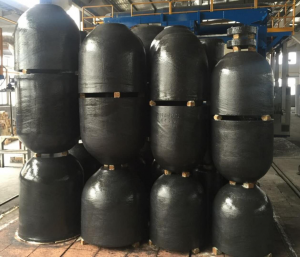
Crucibles come in various models and specifications, offering a wide range of applications without being limited by production scale, batch size, or the variety of melting materials. This flexibility ensures strong adaptability and guarantees the purity of the materials being melted.
Usage Instructions:
After use, place the crucible in a dry area and avoid exposure to rainwater. Before using it again, slowly heat the crucible to 500 degrees Celsius.
When adding materials to the crucible, avoid overfilling to prevent the metal from expanding and cracking the crucible due to thermal expansion.
When extracting molten metal from the crucible, use a spoon whenever possible and minimize the use of tongs. If tongs or other tools are necessary, ensure they match the shape of the crucible to prevent excessive localized force and extend its lifespan.
The lifespan of the crucible is affected by its usage. Avoid directing high-oxidation flames directly onto the crucible, as this can cause rapid oxidation of the crucible material.
Crucible Manufacturing Materials: The production materials of crucibles can be summarized into three main types: crystalline natural graphite, plastic refractory clay, and calcined hard kaolin-like materials. Since 2008, high-temperature resistant synthetic materials such as silicon carbide, alumina corundum, and silicon iron have also been used as the framework materials for crucibles. These materials significantly enhance the quality, density, and mechanical strength of the crucible products.
Applications: Crucibles are commonly used for:
Burning solid substances
Evaporation, concentration, or crystallization of solutions (when evaporating dishes are not available, crucibles can be used instead)
Important Usage Notes:
Crucibles can be directly heated, but they should not be rapidly cooled after heating. Use crucible tongs to handle them when they are hot.
Place the crucible on a clay triangle during heating.
Stir the contents when evaporating and use the residual heat for near-complete drying.
Classification of Crucibles: Crucibles can be broadly divided into three categories: graphite crucibles, clay crucibles, and metal crucibles. Within the graphite crucible category, there are standard graphite crucibles, special-shaped graphite crucibles, and high-purity graphite crucibles. Each type of crucible differs in performance, usage, and operating conditions, leading to variations in raw materials, production methods, manufacturing techniques, and product specifications.
Specifications and Numbering: Crucible specifications (sizes) are usually denoted by sequential numbers. For instance, a #1 crucible can hold a volume of 1000g of brass and weighs 180g. The melting capacity for different metals or alloys can be calculated by multiplying the crucible's volume-to-weight ratio by the appropriate metal or alloy coefficient.
Specific Applications: Nickel crucibles are suitable for melting samples containing NaOH, Na2O2, Na2CO3, NaHCO3, and KNO3 in alkaline solvents. However, they are not suitable for melting samples containing KHSO4, NaHS04, K2S2O7, or Na2S2O7, or other acidic solvents, as well as alkaline sulfides containing sulfur.
In conclusion, crucibles offer a diverse range of applications in various industries, and by following proper usage guidelines, their longevity and efficiency can be maximized.
Post time: Aug-01-2023
